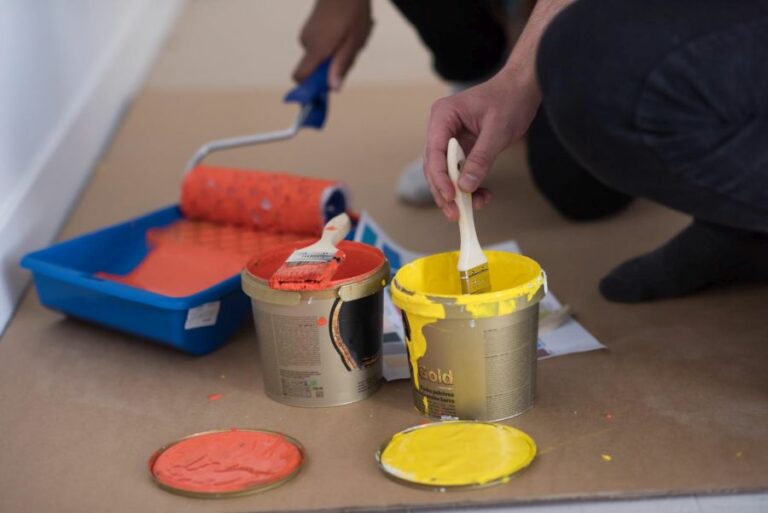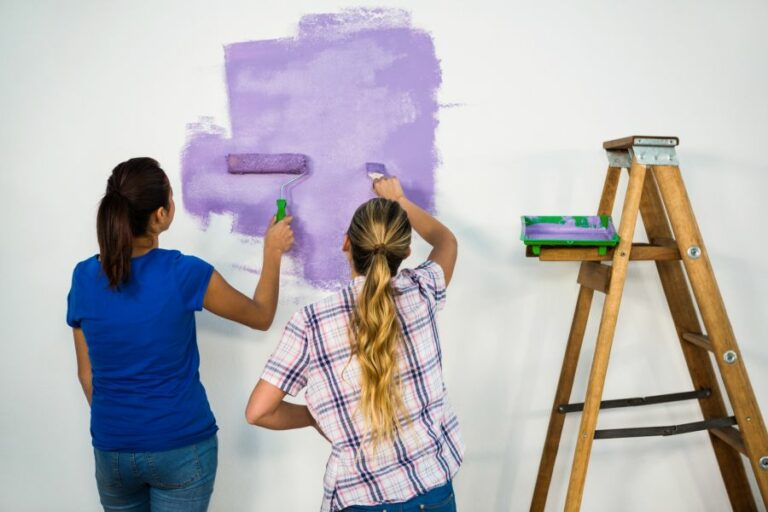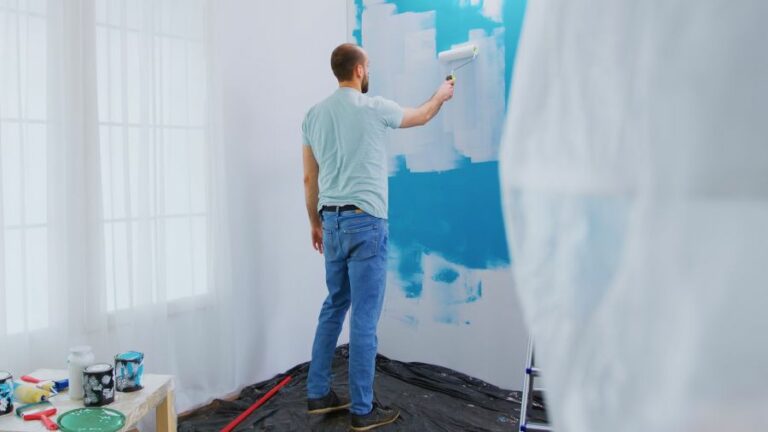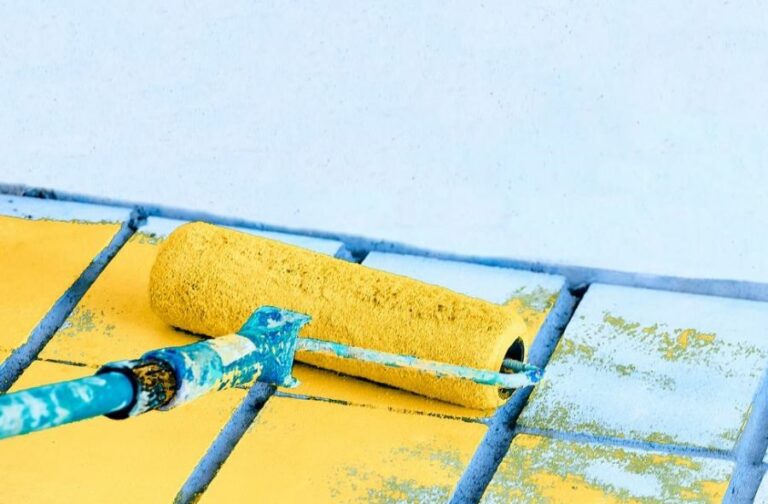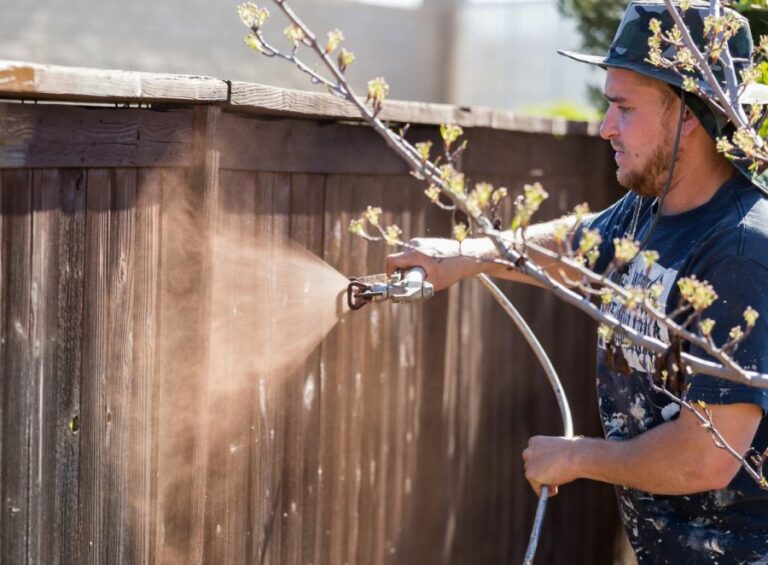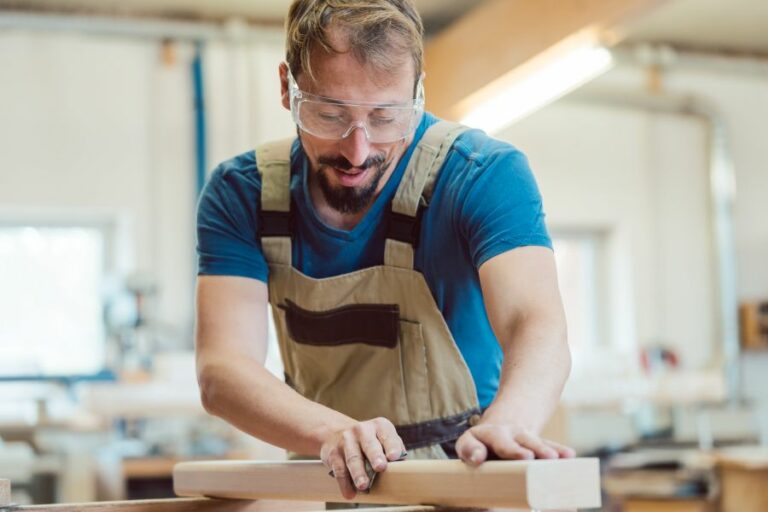Prevent Mold During Surface Preparation. What Pros Say
Preventing mold during surface preparation is essential to ensure any space’s longevity and visual appeal. However, figuring out the best methods to prevent mold growth can be daunting. Fortunately, we’re here to offer guidance and assistance on this topic, and we’re confident that we can help you achieve a mold-free surface with a few essential tips and techniques.
Prevent mold during surface preparation:
To prevent mold growth during surface preparation, identify and fix potential mold sources, choose mold-resistant building materials, ensure proper ventilation and maintain humidity levels between 30% and 50%, clean and disinfect surfaces, regularly inspect and monitor the site, address water intrusion issues promptly, and educate the construction team about mold prevention strategies.

Dealing with mold during surface preparation? Read on to discover effective methods for preventing and removing mold – ensuring a safe, healthy, and long-lasting finish. Don’t let mold ruin your project!
Contents
- 1 Avoid Mold Growth During Surface Prep
- 2 Key Strategy for Effective Mold Prevention
- 3 Stopping Mold Formation Post-Cleaning
- 4 Ideal Cleaning Process for Mold on Hard Surfaces
Avoid Mold Growth During Surface Prep
Mold is a common problem that can arise during surface preparation when moisture is present. It often grows on construction materials, such as wood and drywall, causing health issues and structural damage.
It’s essential to take preventive measures to ensure mold doesn’t form or spread during the preparation process. This expert guide will provide practical tips for preventing mold growth during surface preparation and keeping your construction project safe and healthy.
• Identifying Potential Mold Source
Before starting any surface preparation, it’s vital to identify potential sources of mold growth. These sources can include leaking pipes, poor ventilation, and moisture buildup. Once the origin of moisture is located and fixed, you can prevent mold growth during surface preparation effectively.
If the situation is severe, consider hiring a professional to remediate the mold problem before proceeding with any repairs or renovations.
• Choose the Right Building Materials
Selecting appropriate building materials plays a crucial role in preventing mold growth during any construction project. It’s better to opt for mold-resistant materials which do not support mold growth. For instance:
- Use mold-resistant drywall instead of traditional paper-faced drywall
- Opt for moisture-resistant insulation materials, such as extruded polystyrene foam
- Choose paint with built-in antimicrobial properties
- Select lumber treated to inhibit mold growth
• Proper Ventilation and Dehumidification
Maintaining proper ventilation throughout the construction process is critical for preventing mold growth. By ensuring constant air circulation, you will reduce the chances of moisture accumulating, which ultimately deters mold growth.
Utilize exhaust fans, air movers, or dehumidifiers to keep humidity levels in check. According to the US Environmental Protection Agency (EPA), it’s crucial to maintain indoor humidity levels between 30% and 50% to prevent mold from growing.
• Thorough Cleaning and Disinfection
Before starting any surface preparation, thoroughly clean and disinfect the construction site to eliminate any existing mold. Use a vacuum with a high-efficiency particulate air (HEPA) filter to remove mold particles from surfaces.
Opt for a commercial mold-killing solution, or make your own by mixing a cup of bleach with a gallon of water. Apply the solution onto the affected area and let it sit for a few minutes before scrubbing and rinsing.
Remember to wear proper personal protective equipment, like gloves and goggles, while handling chemicals and cleaning moldy surfaces.
• Regular Inspection and Monitoring
Monitor your construction site regularly for signs of mold growth or water intrusion. Implement walk-through inspections of the site to identify any potential mold problems early in the project, allowing for prompt remediation.
Monitoring and managing relative humidity levels and also measuring the moisture content of building materials can be an effective way to prevent mold growth during surface preparation.
• Promptly Address Water Intrusion Issues
Water leakage, whether due to faulty roofing, plumbing, or a weather event like heavy rainfall, can significantly contribute to mold growth.
If you discover water intrusion on your construction site, address the issue promptly by repairing any leaks, drying out wet materials, and removing damaged materials with mold growth.
• Educate and Train Your Construction Team
Educate construction team members about the importance of preventing mold growth during surface preparation. Provide training on techniques and strategies for mold prevention and share tips for identifying potential mold sources.
Knowledgeable and well-trained workers are an essential aspect of preventing mold growth during surface preparation.
In summary, preventing mold growth during surface preparation is a vital aspect of maintaining a safe and healthy construction site.
By identifying potential mold sources, using mold-resistant materials, ensuring proper ventilation, thoroughly cleaning and disinfecting surfaces, regularly inspecting and monitoring the site, addressing water intrusion issues, and educating your team about mold prevention, you can significantly mitigate the risk of mold growth during surface preparation.
Methods to Prevent Mold During Surface Preparation
Step | Description |
|---|---|
1 | Inspect the area for any existing mold or water damage. |
2 | Remove any moldy or water-damaged materials and dispose of them properly. |
3 | Ensure the area is well-ventilated before beginning surface preparation. |
4 | Clean surfaces thoroughly with a mold-killing solution, such as a mixture of water and bleach or a commercial mold remover. |
5 | Allow surfaces to dry completely before applying any paint, wallpaper, or other finishes. |
6 | Choose mold-resistant materials for finishing surfaces, such as mold-resistant paint, moisture-resistant drywall, or tiles. |
7 | Regularly inspect the area for any signs of moisture or mold growth, addressing any issues promptly. |
Key Strategy for Effective Mold Prevention
Mold is a common problem that can cause health issues and damage to your property. Therefore, it’s crucial to incorporate effective strategies for avoiding mold in your home.
• Why is Moisture Control Important?
Mold requires moisture to grow, which makes controlling the humidity level in your home essential for preventing mold growth.
The United States Environmental Protection Agency (EPA) recommends maintaining indoor humidity levels between 30% and 60% to hinder mold growth.
• Identify and Address Moisture Sources
Checking for and resolving moisture issues is a crucial step in controlling humidity levels. In this section, we’ll look at common sources of moisture and how to address them.
1. Inspect Your Home for Leaks
Leaks can lead to high moisture levels, so it’s important to check your home periodically for any signs. Pay attention to common leak areas, such as:
- Roof
- Windows
- Pipes
- Basement
Fix any leaks you find as soon as possible to prevent further moisture buildup.
2. Proper Drainage
Poor drainage can cause water to accumulate near your home’s foundation, leading to moisture issues. Ensure that your gutters and downspouts are clear of debris and functioning correctly. Also, consider installing extensions to direct water further away from your house.
3. Install a Vapor Barrier
A vapor barrier is a material designed to prevent moisture from penetrating your home. Installing these barriers in crawl spaces and basements can significantly reduce humidity levels.
• Humidity Control Methods
Here are some effective methods that can help you maintain the recommended humidity levels in your home:
1. Use a Dehumidifier
A dehumidifier is an appliance that removes excess moisture from the air. If you live in a humid environment or have rooms with high humidity levels, investing in a dehumidifier can significantly reduce the risk of mold growth.
2. Ventilation
Proper ventilation can help reduce humidity levels by allowing air to circulate throughout your home. Ensure that exhaust fans are functioning in moisture-prone areas like your kitchen and bathroom. Also, consider opening windows and using fans to promote airflow.
3. Air Conditioning
Air conditioning can reduce the humidity in your home by removing moisture from the air during the cooling process. Maintain your air conditioning system by regularly cleaning or replacing filters and ensuring the system is functioning optimally.
4. Household Plants
Certain houseplants, such as the Peace Lily and English Ivy, can help absorb moisture from the air. However, it’s essential to avoid overwatering these plants, as doing so can contribute to increased humidity.
• Regular Cleaning and Mold Inspection
Keeping your home clean and regularly inspecting it for signs of mold is vital for avoiding mold growth. Here are some recommendations:
1. Use Mold-Resistant Materials
When renovating or repairing areas prone to mold, consider using mold-resistant materials like mold-resistant drywall and paint.
2. Clean and Dry Wet Areas
Promptly clean and dry wet areas, as mold can start growing within 48 hours. For example, dry your bathroom floor after showering and address any spills immediately.
3. Routinely Check for Mold
Regularly inspect your home for any signs of mold growth, paying close attention to damp and dark areas. If you discover any mold, promptly address the issue to prevent it from spreading.
• Conclusion
Moisture control is an essential strategy for avoiding mold in your home.
By maintaining the recommended humidity levels, addressing moisture sources, and implementing additional measures like proper ventilation and regular cleaning, you can significantly reduce the risk of mold growth and keep your home safe and healthy.
Stopping Mold Formation Post-Cleaning
Mold is a common issue that can be found in various indoor environments. It is caused by the presence of moisture and can lead to various health problems if not treated promptly.
One of the key steps in addressing mold problems is proper cleaning. However, post-clean maintenance is just as important as the cleaning process.
• The Importance of Mold Prevention
Mold prevention is essential for maintaining a healthy living space.
Molds produce allergens, irritants, and even toxic substances (like mycotoxins). Inhaling or touching mold particles can cause allergic reactions, asthma attacks, and other respiratory issues, especially in people with compromised immune systems.
Preventing mold growth after cleaning is crucial not only for health reasons but also to save time and money, as recurring mold issues can lead to expensive repairs and replacements in the long run.
• Seven Effective Strategies for Preventing Mold Growth
1. Maintain Proper Ventilation
Good airflow is critical to preventing mold growth. Make sure to maintain your HVAC system, and clean or replace filters regularly to allow for proper air circulation.
Open windows and doors whenever possible, and consider using exhaust fans in areas with high humidity levels, like kitchens or bathrooms.
2. Use a Dehumidifier
Controlling humidity levels is crucial in preventing mold growth after cleaning. A dehumidifier is an excellent appliance to regulate the moisture in the air, especially in basements or other damp areas.
The recommended relative humidity level for indoor spaces is between 30% and 50%. Consider using a hygrometer to monitor humidity and adjust your dehumidifier accordingly.
3. Seal Leaks and Cracks
Water leaks from pipes, roofs, or walls can contribute to high moisture levels, which, in turn, facilitate mold growth. Conduct regular inspections for leaks and cracks and promptly seal them or hire professionals to fix them.
In addition, weatherproofing doors and windows can prevent rainwater and moisture from seeping in, thereby keeping your home mold-free.
4. Avoid Organic Material
Mold thrives on organic materials like wood, paper, and fabric. Store these materials in tightly sealed containers, and avoid placing them in damp or mold-prone areas (like basements or closets).
When decorating, opt for materials that are less susceptible to mold growth, like metal, glass, or plastic surfaces.
5. Keep Surfaces Clean and Dry
After cleaning mold, it is vital to keep surfaces dry, as wet surfaces can quickly lead to regrowth. Wipe down any surface that has been exposed to moisture, and avoid using excessive water when cleaning.
In sinks, showers, or other areas where water usage is frequent, promptly clean up excess water and allow the area to air dry.
6. Use Mold-Resistant Materials and Products
Incorporate mold-resistant materials and products into your home to prevent mold from returning. For instance, use mold-resistant paint in damp areas or purchase moisture-resistant drywall for basements.
There are also several cleaning products and additives available that contain anti-fungal agents. These can help prevent mold from reappearing on surfaces.
7. Properly Dispose of Moldy Materials
When cleaning mold, you may need to dispose of some items. Bag these items before removal to minimize the spread of mold spores.
Also, ensure that the moldy materials are adequately sealed and disposed of according to local regulations to prevent mold from re-appearing or contaminating other areas.
• A Final Word on Mold Prevention
Preventing mold after cleaning is essential for maintaining a clean and healthy living space. Following these seven strategies can significantly reduce the chances of mold reappearing in your home.
Remember to routinely monitor humidity levels, maintain proper ventilation, and clean and dry surfaces. With these efforts, you can effectively keep mold at bay and ensure the health and safety of your household.
| How do you prevent mold after cleaning? | |
|---|---|
| 1. Ensure proper ventilation | Open windows and doors or use exhaust fans to reduce moisture and humidity levels in the room. |
| 2. Dry the cleaned areas thoroughly | Use a towel or a fan to speed up the drying process to ensure that no moisture is left behind. |
| 3. Keep humidity levels low | Use a dehumidifier or air conditioner to maintain indoor humidity at a level below 60%. |
| 4. Regularly clean and disinfect susceptible surfaces | Use mold-killing products to clean and disinfect surfaces that are prone to mold growth, such as bathrooms and kitchens. |
| 5. Fix water leaks and moisture problems | Inspect your home for any water leaks or sources of excessive moisture and address them promptly to prevent mold growth. |
| 6. Use mold-resistant materials | When renovating or building a new home, use mold-resistant materials like mold-resistant drywall and paint to prevent future mold issues. |
Ideal Cleaning Process for Mold on Hard Surfaces
Mold is a common and unpleasant problem that affects various surfaces in our homes and offices. When it comes to cleaning mold on hard surfaces, it is crucial to take the right approach to ensure effective results and a healthy living environment.
• Identifying Mold on Hard Surfaces
Before diving into the cleaning process, it is essential to identify mold on hard surfaces. Mold appears as dark, fuzzy, or slimy spots, typically black, green, or even white in color.
It often has a musty odor, while it thrives in damp, humid, and warm conditions. Some common hard surfaces where mold tends to grow include tiles, glass, countertops, concrete, and metal.
• Essential Tools and Supplies for Mold Cleaning
To effectively clean mold off hard surfaces, gather the following tools and supplies:
- Rubber gloves
- Protective eyewear
- Face mask (preferably N95 or higher)
- Scrub brush or sponge
- Bucket
- Clean, dry cloths or paper towels
- Detergent or mild soap
- Water
- Household bleach (optional)
- Spray bottle (optional)
• Cleaning Mold on Hard Surfaces: The Step-by-Step Procedure
– Step 1: Prepare and Protect Yourself
Ensure proper ventilation in the cleaning area by opening doors and windows. Wear rubber gloves, protective eyewear, and a face mask to prevent contact with airborne mold spores or potential skin irritants.
– Step 2: Remove Loose Mold
Using a clean, dry cloth or paper towel, gently wipe away any loose mold from the surface. This helps to prevent the spreading of mold spores during the cleaning process.
– Step 3: Mix the Cleaning Solution
In the bucket, mix warm water with detergent or mild soap. For every gallon of water, add a tablespoon of detergent or soap. For severe mold infestations, consider using a bleach solution. To prepare the solution, mix one cup of bleach with one gallon of water.
Caution: Do not mix bleach with ammonia or other cleaning agents, as this can produce toxic fumes.
– Step 4: Apply Cleaning Solution
Use the scrub brush or sponge to apply the cleaning solution onto the moldy surface. Scrub thoroughly to remove mold and any stains. Depending on the severity, you might need to soak the surface with the cleaning solution for several minutes before scrubbing.
– Step 5: Rinse and Dry the Surface
After removing the mold, rinse the surface thoroughly using clean water. Use a dry cloth or paper towel to remove excess moisture. Ensure the area is completely dry to prevent mold re-growth.
– Step 6: Dispose of Cleaning Materials
Finally, properly dispose of used cleaning materials, including gloves, paper towels, and sponges. Consider sealing these items in a plastic bag before placing them in the trash.
• Tips for Preventing Mold Growth on Hard Surfaces
To minimize the risk of mold growth on hard surfaces, consider the following preventive measures:
- Regularly clean and dry surfaces, especially in damp areas like bathrooms and kitchens.
- Ensure proper ventilation in areas prone to humidity, such as bathrooms and basements. Install exhaust fans or use a dehumidifier if necessary.
- Fix any water leaks or moisture issues in your home.
- Avoid keeping damp items or materials on hard surfaces for extended periods.
For more information on mold prevention and cleaning, check out the Centers for Disease Control and Prevention (CDC) guidelines on mold prevention and remediation in homes.
• In Conclusion
Dealing with mold on hard surfaces can be daunting, but following the recommended cleaning procedure and taking preventive measures will ensure a mold-free and healthy living environment.
Remember to prioritize your safety by wearing protective gear and properly disposing of cleaning materials.

